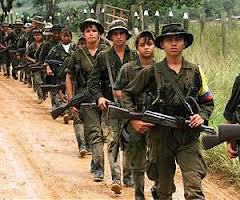
The Times said that the United Arab Emirates [UAE] has sent 450 Latin American troops, predominately Colombian mercenaries, to Yemen last month in October. Additional Colombian troops remain in the UAE and are completing training with grenade launchers and armored vehicles, which are currently operated by Emirati troops in Yemen.
"The Colombian troops now in Yemen, handpicked from a brigade of some 1,800 Latin American soldiers training at an Emirati military base, were woken up in the middle of the night for their deployment to Yemen last month. They were ushered out of their barracks as their bunkmates continued sleeping, and were later issued dog tags and ranks in the Emirati military. Those left behind are now being trained to use grenade launchers and armored vehicles that Emirati troops are currently using in Yemen", the Times said.
The paper further said that, "The presence of the Latin American troops is an official secret in the Emirates, and the government has made no public mention of their deployment to Yemen. Yousef Otaiba, the Emirati ambassador to Washington, declined to comment. A spokesman for United States Central Command, the military headquarters overseeing America’s involvement in the Yemen conflict, also declined to comment".
"In addition, a recent United Nations report cited claims that some 400 Eritrean troops might be embedded with the Emirati soldiers in Yemen - something that, if true, could violate a United Nations resolution restricting Eritrean military activities", the Times said.
It revealed that: "The United States has also been participating in the Saudi-led "campaign" in Yemen, providing logistical support, including airborne refueling, to the nations conducting the airstrikes. The Pentagon has sent a team to Saudi Arabia to provide targeting intelligence to the coalition militaries that is regularly used for the airstrikes".
"The Obama administration has also in recent years approved the sale of billions of dollars’ worth of military hardware from American contractors to the Saudi and Emirati militaries, equipment that is being used in the Yemen conflict. This month, the administration authorized a $1.29 billion Saudi request for thousands of bombs to replenish stocks that had been depleted by the ["]campaign["] in Yemen, although American officials say that the bombs would take months to arrive and were not directly tied to the war in Yemen", according to the paper.
"The Saudi air ["]campaign["] has received widespread criticism from human rights groups as being poorly planned and as having launched strikes that indiscriminately kill Yemeni civilians and aid workers in the country. Last month, Saudi jets struck a hospital run by Doctors Without Borders in Saada Province in northern Yemen, and in late September the United Nations reported that 2,355 civilians had been killed since the campaign began in March", it further said.
Moreover, the Times said that, "Wealthy Arab nations, particularly Saudi Arabia, Qatar and the Emirates, have in recent years embraced a more aggressive military strategy throughout the Middle East, trying to rein in the chaos unleashed by the Arab revolutions that began in late 2010. But these countries wade into the new conflicts - whether in Yemen, Syria or Libya - with militaries that are unused to sustained warfare and populations with generally little interest in military service".
It said that, "The exact mission of the Colombians in Yemen is unclear, and one person involved in the project said it could be weeks before they saw regular combat. They join hundreds of Sudanese soldiers whom Saudi Arabia has recruited to fight there as part of the coalition".
"Hundreds of Colombian troops have been trained in the Emirates since the project began in 2010", the paper added.